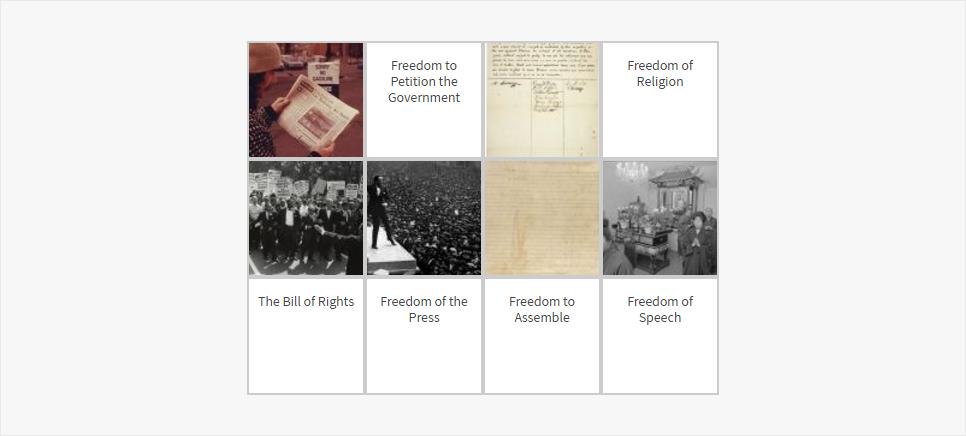The First Amendment of the Bill of Rights
Seeing the Big Picture

About this Activity
- Created by:National Archives Education Team
- Historical Era:Across Eras: Civics & Government
- Thinking Skill:Historical Comprehension
- Bloom's Taxonomy:Analyzing
- Grade Level:Upper Elementary
In this activity for upper elementary grades, school students will analyze primary sources and match them with the rights extended to Americans by the First Amendment of the U.S. Constitution.
https://www.docsteach.org/activities/student/the-first-amendment-of-the-bill-of-rightsDocuments in this activity
- Bill of Rights
- Chinese Buddhists at the Temple of Enlightenment, Bronx, New York
- Douglas Fairbanks, movie star, speaking in front of the Sub-Treasury building, New York City.
- Gas Rationing System (Odd-Even Plan) is Announced
- Peace Petition to Congress
- Photograph of Leaders at the Head of the Civil Rights March on Washington, D.C.
- The Bill of Rights and Beyond




